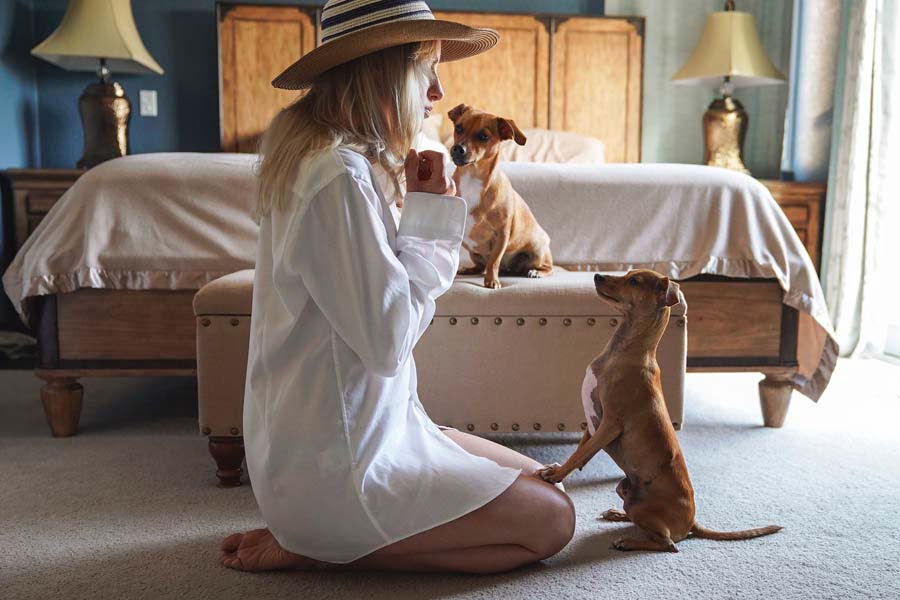A Turramurra Vet Article
How your Body Language Affects your Dog’s Behaviour!

How your Body Language Affects your Dog’s Behaviour!
by Katie Bedrossian, Pet Behaviour Consultant
Did you know that dogs are experts at reading the subtle cues in our body language? They are much better skilled at this than understanding our verbal cues.
Excitable dogs become more excited when their humans use rapid body movements, while anxious dogs can become more anxious with direct eye contact, or if someone is leaning in and reaching towards the head, neck and shoulder area.
The way you position and move your body also greatly affects how your dog responds to you, as well as the progress of your training.
Here are 5 ways you can change your body language to improve your dog’s behaviour
- Position your hands behind you. Unless you are using a treat to lure your dog into position (treat on nose to lead the dog), the best position for your hands when training is behind your back. Hands out in front can encourage food trained dogs to look at hands rather than faces, encourage jumpers to jump up for food and encourage some dogs to position themselves where your hand is rather than more central. It also reduces food dependency if the food or clicker (if using) is hidden behind your back.
- Stand up tall when giving the ‘Sit’ cue. It is very natural for people to lean their body towards their dog for interaction (and this is fine in this instance). However, if we are trying to get a dog to sit, leaning towards them may cause them to stay standing (or jump up). This is because the closer your face is to their level, the less they have to look up. Looking up is often what initiates their bottom to go down into a sitting position.
- Face your body in the direction you want your dog to go. Whether your dog is not wanting to walk with you or has grabbed a forbidden item at home, facing your body completely in the opposite direction to your dog can encourage them to head towards you. Better yet, jog away from them, wave a toy around and/or squeak a squeaky toy to let them know that following you is valuable. The reason this works is that facing away from your dog indicates that there is something interesting where you are, whereas facing towards your dog indicates that something is interesting where they are.
- Avoid chasing your dog when they want to play a chase game. Turn around and jog away to encourage them to chase you and have a toy ready if your dog likes to play with their mouth. Chasing games where you chase your dog can encourage ‘keep away’ behaviour and make it harder to get your dog to come close to you, put a harness and lead on or be moved into an area for the purpose of management and separation.
- Take some deep breaths and always end a training session on a positive note. While this isn’t a direct body language cue, taking a deep breath and ending on a positive note reduces your stress and frustration with training, which transfers to calm body language that we may not be aware of, but our dogs certainly are.
These are just a snippet of body language cues that you can use with your dog to help with training sessions. For more specific guidance with your dog’s behaviour challenges, book a consultation today with our Pet Behaviour Consultant – Kate Bedrossian.

